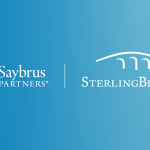Uncover critical gaps and define a truly personalized retirement plan
- It’s All About Solutions – Make it your priority to talk about your client’s needs and concerns rather than products, especially when you are helping your clients plan for retirement and potentially explore annuities as a part of their portfolio. It’s a common pitfall to lead with a specific product in client conversations. Because they must stay abreast of the latest product features and pricing, financial professionals may naturally start with an annuity they like and then back into how its features might help meet their clients’ needs. The problem is, this approach can fail to address critical needs simply because they haven’t been identified. Reverse this process, and you’ll see meaningful results. Start with uncovering your clients’ concerns and the protection they already have, and then use this information to select the most suitable product.
- 4 Critical Questions to Ask Your Clients- Conversations with your clients should start with the four basic planning needs in retirement – accumulation strategies, income level needed and sources, healthcare expenses and leaving a legacy for loved ones. Choosing the right approach means asking the right questions that will uncover your client’s most pressing needs: Are they worried about outliving their savings? Are they concerned about possible future illness? What are their existing sources of retirement income? How much of their existing retirement income is guaranteed? Your client’s answers will help you identify the gaps that cause them the most worry, and your final step is to match your client with the product that will best fill those gaps.
- Go Beyond Accumulation & Income – Many clients have pre-set ideas about specific products like annuities or long term care insurance, although they may still ask about insurance protection or income protection. This is where the educational process comes in. Products have changed so much in the past several years, and many now cover a much broader spectrum of needs than in the past. For example, discussing annuities used to be just about getting the potential for upside gains with downside protection. These products now offer much more multifaceted protection. Use this opportunity to educate your clients on the new features and options available on the market today.
- Necessary vs. Nice-to-Have – It is fundamental to help your clients figure out their income versus expenses in retirement. Where is the income coming from: a pension, a 401(k) or IRA, Social Security, or other sources like investment income? What parts of that income are guaranteed and which are not guaranteed? The advisor must align those income figures with the client’s expenses and identify which are discretionary and non-discretionary – and it is the client who must decide which are “necessary expenses.” Aside from the usual categories of housing, food, utilities, taxes, transportation and health care, some people consider travel or funding a grandchild’s education necessary. After establishing what expenses are necessary to cover, the financial professional can then look at strategies to enhance income or generate guaranteed funds and identify specific products that will best meet these objectives.
 SAYBRUS NEWS
SAYBRUS NEWS





Recent Comments